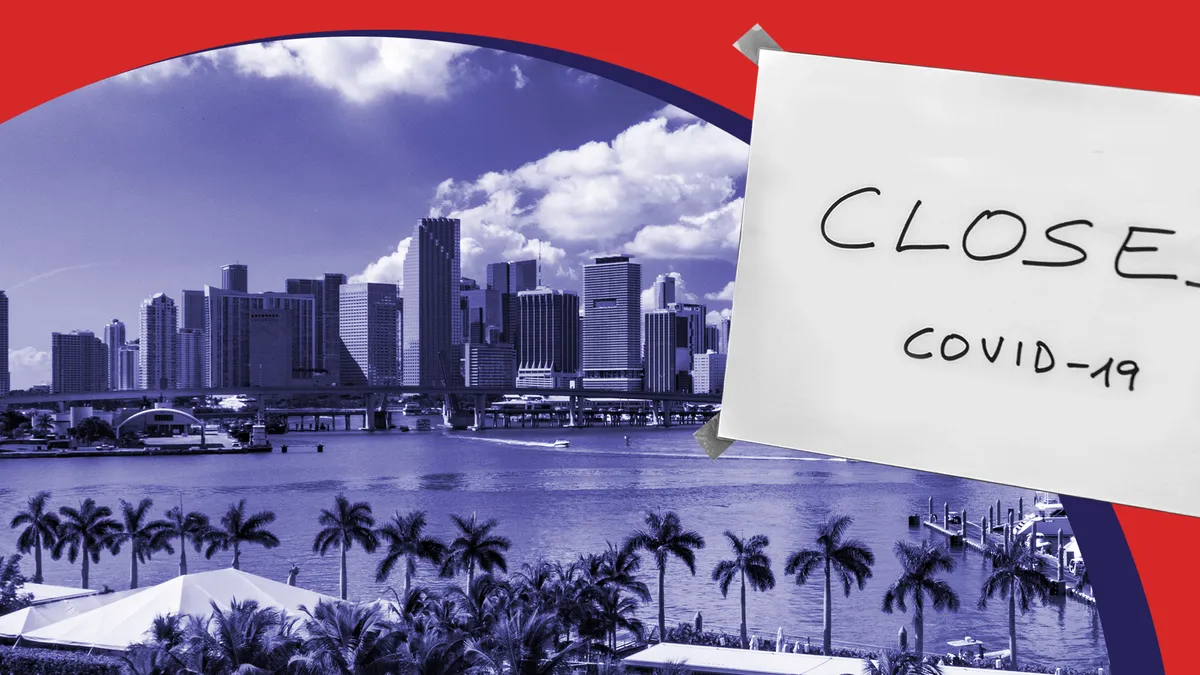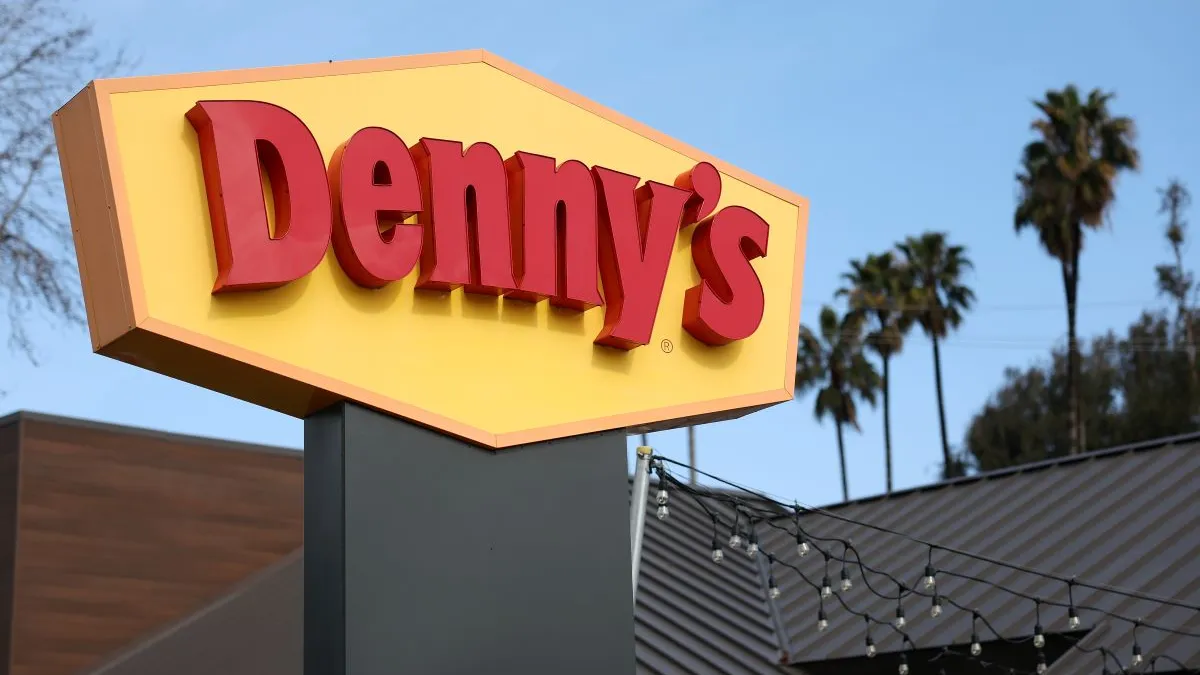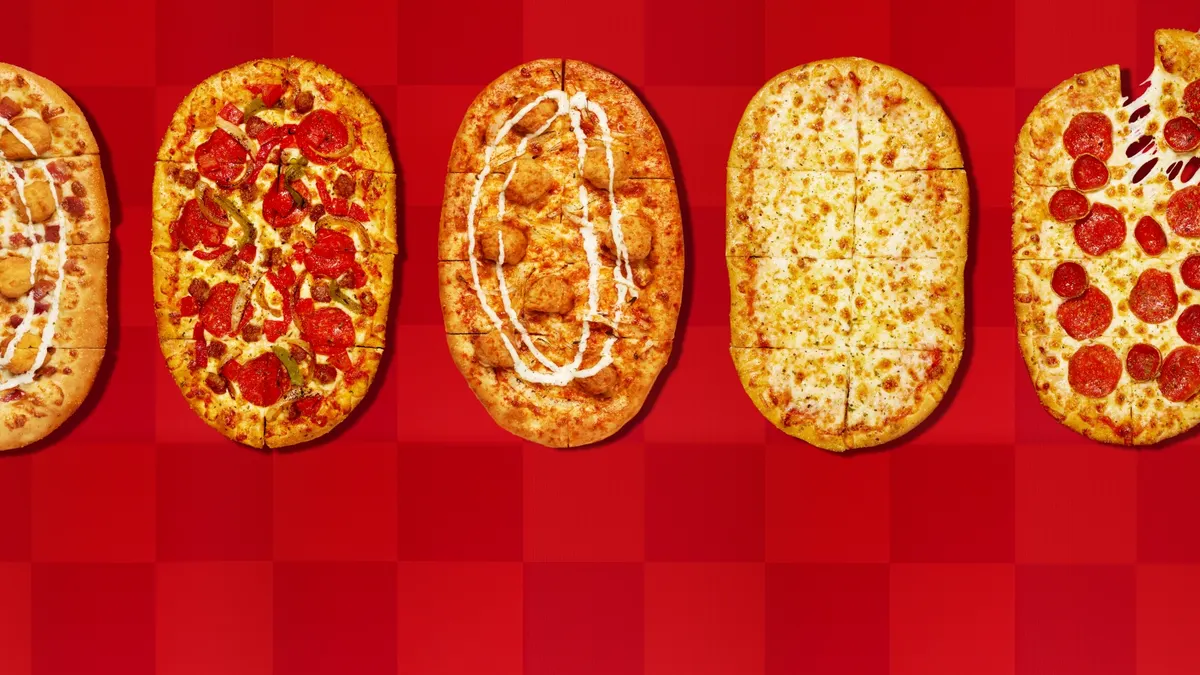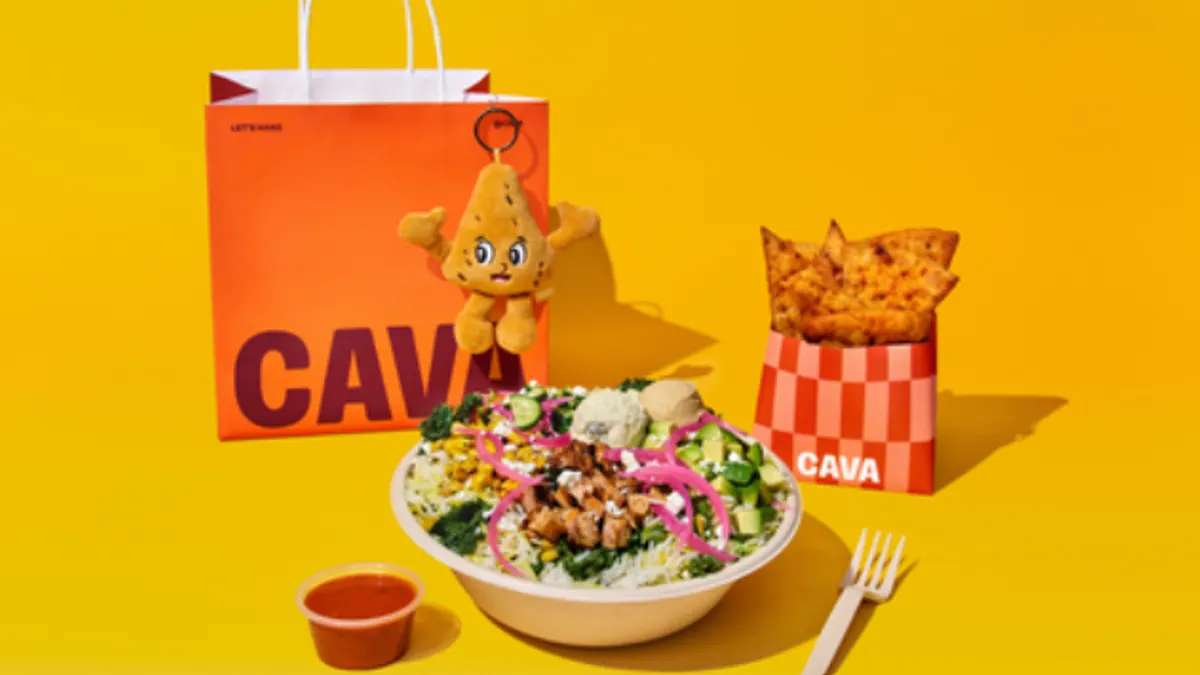This article is the final story in a six-part series exploring how major restaurant cities were impacted by the pandemic. All articles in the series are posted here.
Snapshot:
- Restaurant closures: 10,000 Florida restaurants have permanently closed as of March 11, The Florida Restaurant & Lodging Association estimates.
- Restaurant job losses: Miami’s leisure and hospitality segment lost 75,600 jobs between January 2020 and January 2021, a 22.3% decline, according to the U.S. Bureau of Labor Statistics.
- Restaurant revenue loss: Miami-Dade restaurants lost $742 million in direct revenue between March and August compared to the same period in 2019, according to Florida International University’s FIU Chaplin School of Hospitality & Tourism Management
"Some landlords in particular are having multiple people approach them for the same space. And they're almost having bidding wars on these prime locations… because either a restaurant space is open, or an existing tenant is leaving, or… existing restaurants are assigning their leases to these new Northern operators [that] are coming down."

Omar Ali-Shamaa
Attorney, Wolfe Pincavage
While restaurants around the country struggled to drive sales amid prolonged indoor and outdoor dining closures and in some areas, brutal winters, the sun shone on Miami operators.
Miami-Dade's response to the pandemic was fairly light-handed compared to the plans developed by local governments in Los Angeles, New York City, Seattle, Chicago and Washington, D.C. Beyond the first few weeks of the COVID-19 outbreak, restaurants were permitted to seat guests for outdoor dining — taking advantage of the region's picturesque patios, open space and ocean breezes.
The pandemic still took a toll, however. Between March and August 2020, Miami-Dade restaurants lost $742 million in revenue compared to the same period in 2019, according to data from Florida International University's FIU Chaplin School of Hospitality & Tourism Management. As of March 15, total small businesses revenue in the city of Miami declined 31.5%.
Miami-Dade restaurants were also subject to flip-flopping restrictions, with now former mayor Carlos Giménez and Gov. Ron DeSantis sometimes issuing contradictory guidance.
The region's coronavirus case rates are improving though. On March 24, Miami reported 1,058 new cases, down from the city's peak of 3,440 new daily cases on Jan. 8 — or a 69.2% decline, according to data compiled by The New York Times.
Earlier this month, Miami-Dade County Mayor Daniella Levine Cava — who took office in January after Giménez met his term limit — said if the current pace of infections holds steady and the 14-day positivity rate average is at or below 5.5% by early April, the market's curfew (currently from midnight to 6 a.m.) could be phased out.
This could help local restaurants boost their alcohol sales, which are vital to thin-margined operators. If positivity rates exceed 6%, however, the curfew could be reinstated.
Still, it's possible this timeline could be thrown off by an influx of thousands of tourists who recently descended on Miami Beach for spring break. On March 20, the city declared a state of emergency, suspended outdoor dining for restaurants in the "High Impact Zone" and implemented a 72-hour lockdown. The city plans to extend the state of emergency to reduce crowds.
"We've got too many people and too many looking to act out while there's a pandemic going on," Miami Beach Mayor Dan Gelber told USA Today earlier this week. The shutdown could send Miami restaurant progress backwards just as many other restaurant markets are beginning to bounce back amid widespread vaccinations and loosening restrictions.
While the government responses are implemented to protect the public, Miami operators will never know what percentage of revenue, jobs and eateries could have been saved if restrictions like service curfews and capacity restrictions hadn't been put in place.
How changes to dining policy in Miami affected COVID-19 rates
Miami-Dade County shut down on-premise dining on March 17 last year, allowing only delivery and takeout service until mid-May. Reopening wasn't consistent, however — DeSantis approved Giménez's request to reopen the city's restaurants for outdoor dining and indoor dining at 25% on May 27, but restaurants that fell under county jurisdiction were permitted to reopen nine days prior.
Restaurant Dive calculated the percent increase of COVID-19 cases after each of Miami-Dade County's restaurant policy changes, including the tightening and loosening of capacity caps, using data shared by the Florida Health Department.
The data shows when the county required area restaurants to shutter indoor dining on July 8, cases still increased 127% after 30 days. Later when the county resumed inside operations at 50% capacity on August 30, cumulative COVID-19 infections rose 7.4% after a month. Sixty days after the policy change, cases increased 16.7%. However, to note, 30 days before the restrictions were loosened in August, when Miami-Dade County had an indoor dining ban, the monthly percent increase in cases was 29.6%.
Though this data is interesting, it can't illustrate how local COVID-19 cases correlated to restaurant restrictions. Outside factors including personal gatherings, a rush of visitors over the summer months and an influx of spring break tourists last year may have also influenced COVID-19 spread. These unknowns make it difficult to gauge whether restaurant capacity restrictions can actually slow the spread of the coronavirus.
The need for financial support
As restrictions deeply narrowed how restaurants could bring in revenue, both Miami and Florida released several initiatives to try to alleviate this financial burden.
Restaurant-targeted support issued by city or state
-
Miami-Dade County began accepting applications on Aug. 4 for grants through its $30 million Hospitality Industry Grant program for local independently owned and operated restaurants and non-home-based caterers. Grants were calculated based on individual percentages of eligible costs incurred, with a maximum award of $25,000 per establishment. The program awarded grants to a maximum of two establishments per restaurant/hospitality group (for a grant of $50,000 total).
Priority was given to applicants that have a single establishment, and to businesses that have not been approved or received funds from any institution under the Paycheck Protection Program or other federal or state assisted business loan programs.
The program was intended for restaurants with a maximum of 50 employees and annual revenue that doesn't exceed $10 million. Grant money could have been used to cover 100% of personal protective equipment costs, 80% of rent and mortgage, and 50% of expenses such as utilities, licenses, insurance and perishable food items to "keep businesses safely operating." All funds needed to be used by Dec, 30, 2020. - Miami-Dade County also launched its Industry Relief Fund on Aug. 4, which distributed up to $500 per laid-off or furloughed employees to restaurants, with a maximum of $15,000 per restaurant or bar owner. Up to two locations per hospitality group could apply. The money goes toward employees.
-
The Restaurant Recovery Program launched by Miami-Dade County allowed restaurants to temporarily add or expand outdoor seating areas while meeting social distancing requirements. This applied to the following spaces: private property, private walkways, parking and driving areas. Extended patio seating could be adjacent to and with the permission of the owner. The program also applied to sidewalks and nearby on-street parking, roads or lanes of traffic closed by the city. It appears the program expired on Jan. 31.
-
On March 16, 2021, the Miami-Dade County Commission approved a resolution to limit commission fees charged to restaurants by third-party delivery platforms during a state of emergency. The legislation would prohibit commission fees higher than 20%. In cases where the food order is delivered by an employee of the restaurant or an independent contractor, the fee would be capped at 10% per order.
"A lot of people [were] arguing, you know, instead of giving us a handout, just extend… the curfew…I think [the Hospitality Industry Grant Program] helped a lot of restaurants. It helped us… I think that it was very decent and good for the county to do that."

Andrei Stern
Partner and CFO, SuViche Hospitality Group
Up close: Curfews put a bigger dent in revenue than capacity limits for SuViche Hospitality
As restaurant restrictions from Florida's governor and Miami's mayor overlapped and evolved, Andrei Stern, partner and CFO at SuViche Hospitality Group, looked to Twitter to stay on top of local guidance.
The restaurateur said communication by the local government was challenging because there wasn't one specific channel for COVID-19 updates. Even when he followed Giménez's official account, it would still take time for information about new restaurant restrictions to reach his team, Stern said.
"There was also a lot of one week it’s this and next week you can’t do it and then the following week there is another change," Stern said. "Communication was definitely an issue for us, especially for the places that were most affected by the curfews. … It was very difficult."
Despite announcements that sometimes turned on a dime — Giménez said on July 6 that he would close both indoor and outdoor dining before changing plans the same day after backlash and protests, for example — Stern said at the end of the day, he felt supported by the county throughout the crisis.
"We are one of the few counties and states where we really never shut down except for that initial time period, and we were allowed outside seating since pretty much the summer," he said. "That's obviously helped our industry, helped the employment in our industry and tourism to a certain extent just because things are open down here so we’ve seen a lot of people come down to try and get away."
Miami-Dade's approach to restaurant restrictions was much more relaxed than other warm-weather restaurant markets like Los Angeles, which saw its industry's revenue tank amid two rounds of prolonged outdoor dining closures. This regulatory response helped both of SuViche Hospitality’s restaurant concepts — Peruvian-Japanese fast casual SuViche and Argentinian steakhouse Novecento — make up for financial losses suffered at the start of the area’s lockdown.
Though the group's revenue was down 90% early in the pandemic, five-unit SuViche and four-unit Novecento ended 2020 with revenue losses of 24% and 25%, respectively. Both brands also have nontraditional locations at Hard Rock Stadium, Marlins Park, and during the Miami International Boat Show and the Miami Open, but the stadium restaurants were closed all year.
The SuViche brand was better positioned to succeed during dining room closures because it already had a strong delivery and takeout presence, Stern said. Some of the restaurant's locations already had 40% of their sales coming from off-premise prior to the pandemic.
"We already had the infrastructure to really promote and really push that channel. We had our app, we had our own online ordering system, and that was already in place even before everything started, so that really helped us for SuViche," he said. "Its cuisine is very friendly for delivery and takeout. … It carries well and people are used to ordering sushi."
Once lockdowns went into place, SuViche Hospitality began offering curbside pickup too. But it was more challenging to operate Novecento for off-premise only because steak doesn't carry well, and the concept's menu offers fewer everyday meals, Stern said.
The restaurant group also had to lay off most of its staff during the state's first dining room closure. But the company still sought out ways to support its neighborhood by offering 50% off its sushi at SuViche and 50% off empanadas at Novecento, which also sold ingredients diners could cook at home for "prices that were cheaper than supermarkets," Stern said.
"During that eight-week period, one of our priorities was also to help and give back to the community. Everyone was going through what we were going [through] and people were losing their jobs left and right," he said.
SuViche Hospitality was able to bring most of its employees back after it received a Paycheck Protection Program loan, but had to reduce payroll again when Miami-Dade County entered its second dining room ban in early July. But after that ban lifted at the end of August, the group was eventually able to hire back most of its staff.
Stern and his team also applied for grants for SuViche and Novecento separately through the county's $30 million Hospitality Industry Grant program, which opened in early August. Novecento didn't qualify for the program because one of its locations is licensed to a franchisee in Mexico, but SuViche received $50,000 for two locations — the fund's maximum distribution.
"In my opinion it was very helpful. … It was right at the time when ... the curfew was like 9 or 10 p.m. so our dinners were nonexistent," Stern said. "A lot of people [were] arguing, you know, instead of giving us a handout, just extend … the curfew … But I think considering everything that was going on, I think it helped a lot of restaurants. It helped us. … I think that it was very decent and good for the county to do that."
The curfews put a bigger dent in revenue than capacity restrictions, Stern said.
"Capacity was really never that big of a deal, it was more about not being able to stay open after 9 [p.m.]... You had to stop seating at 8, an hour before closing," he said.
While other restaurants took advantage of the county's Restaurant Recovery Program to expand their patio space into streets, sidewalks and parking lots, Stern didn't pursue this program because most of SuViche Hospitality's locations have plenty of outside seating and his team was stretched thin.
"We had to do a hard restructuring of the company so we were short-staffed at the executive level. We didn't have the manpower to push on certain initiatives and that was one of them," he said.
Going forward, however, Stern plans to implement some operational innovations, such as continuing to offer bundles of ingredients so diners can make a special meal at home for events like Valentine's Day or Mother's Day.
"This has brought a lot of changes, and some of them will stay here, especially the pressure of delivery [and] takeout," he said.
Looking toward the market's future
Miami's balmy climate and open space — combined with the local government's relatively loose COVID-19 restrictions throughout the pandemic — insulated its restaurant scene from the revenue disruption suffered by markets like New York City.
This stability has caught the attention of Northeastern restaurateurs looking to expand in more forgiving jurisdictions in preparation for future pandemics, Wolfe Pincavage attorney Omar Ali-Shamaa said. Ali-Shamaa has a decade of experience in the restaurant industry and has opened over 50 restaurants in South Florida and New York.
"The market for restaurant space in Miami, or South Florida in particular … is more in demand," he sad. "Nobody wants to sit outside in 30-degree weather in New York dining out. So there's been a big influx of restaurants from the North [and] Northeast coming to South Florida — particularly Miami, Broward [County] and West Palm Beach."
Demand is already high, Ali-Shamaa said, because looser restrictions have resulted in fewer restaurant casualties and subsequent pieces of empty real estate.
"Some landlords in particular are having multiple people approach them for the same space. And they're almost having bidding wars on these prime locations … because either a restaurant space is open, or an existing tenant is leaving, or … existing restaurants are assigning their leases to these new Northern operators [that] are coming down."
How Miami's restaurant foot traffic shifted a year after the pandemic
Ali-Shamaa doesn't think this bubble will burst once the pandemic ebbs, either, and predicts recent restaurateur migration to South Florida foreshadows a long-term trend.
Florida's lack of state income tax, which has always drawn businesses to the market, will also entice restaurants looking for warm climates to the area, rather than markets like California, Ali-Shamaa predicts.
"Some of the clients I've actually worked with … are taking over existing leases and kind of trying it out and seeing how the [South Florida] market is, and some of them are entering into 20-year leases because they think ... the future is somewhere where the weather's better, and if something were to happen in the future, you're gonna have a little bit more relaxed restrictions," he said.
Major Wall Street firms are already pursuing a shift to the Sunshine State. Bloomberg reported earlier this week that Goldman Sachs Group Inc. is asking employees to volunteer to move to West Palm Beach, and that Major Food Group, the parent company of New York City concept Carbone, is seeking restaurant locations in the area.
Real estate competition will be steep for high-end restaurants in coveted markets like Miami Beach's waterfront, downtown Miami and the Wynwood neighborhood, Ali-Shamaa said, which could spark restaurant growth in the city's outskirts as operators seek available spaces.
But there could be some roadblocks for restaurateurs looking to enter the market quickly. Local landlords have begun adding provisions to leases called "excess rent clauses" to control tenant turnover and block restaurants from assigning or transferring their leases to outside operators. Ali-Shamaa said he has seen lease terms like this prior to the pandemic, but it's now becoming a trend.
"What an excess rent clause does, is essentially, [is] if a restaurant tries to assign its lease or sell its business and is making a profit on that assignment above and beyond the rental value that it would be paying to the landlord, the landlord would actually get all or a portion of those profits," he said. "It prevents tenants from shopping around their lease or getting out of their lease … giving landlords a lot more leverage when tenants are trying to assign or sell their business."
Still, Ali-Shamaa feels that because the South Florida restaurant industry is rebounding faster than the rest of the country's markets, it will attract a stream of outside operators despite these challenges.
"If you want to get a Michelin star, [if] you want to establish really fine dining, New York is the place to be for most of these big restaurants … but for the most part for the other restaurants, I think it's going to be a long-term play for South Florida because [it's] a little bit more predictable down here," he said. "[When] most places were completely shut down … in South Florida, [restaurants] were allowed to operate at 50% capacity outdoors."





















